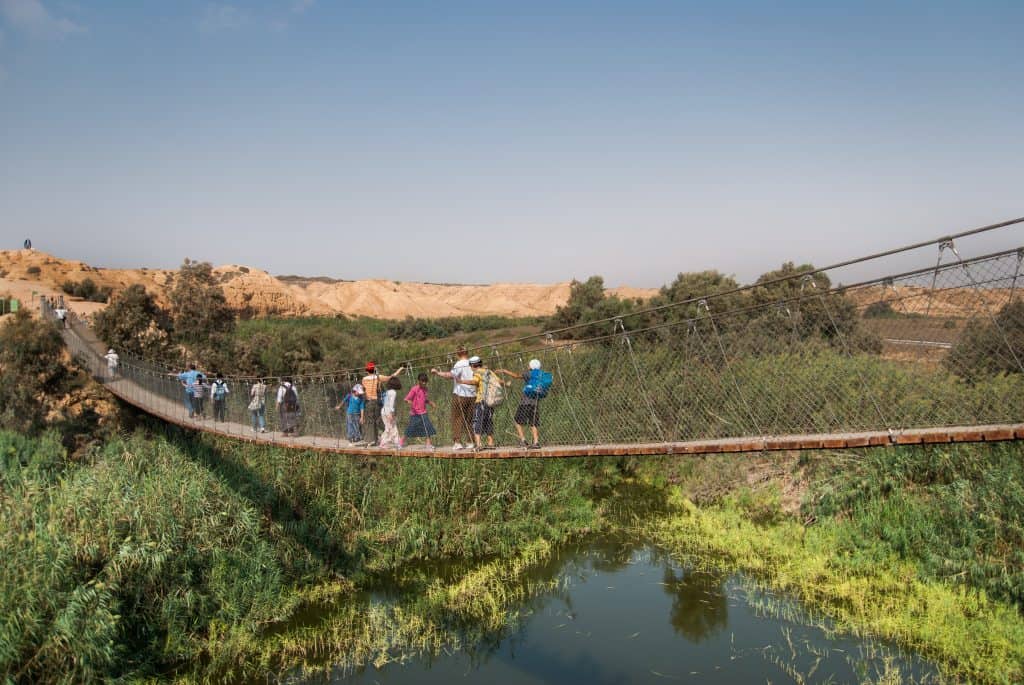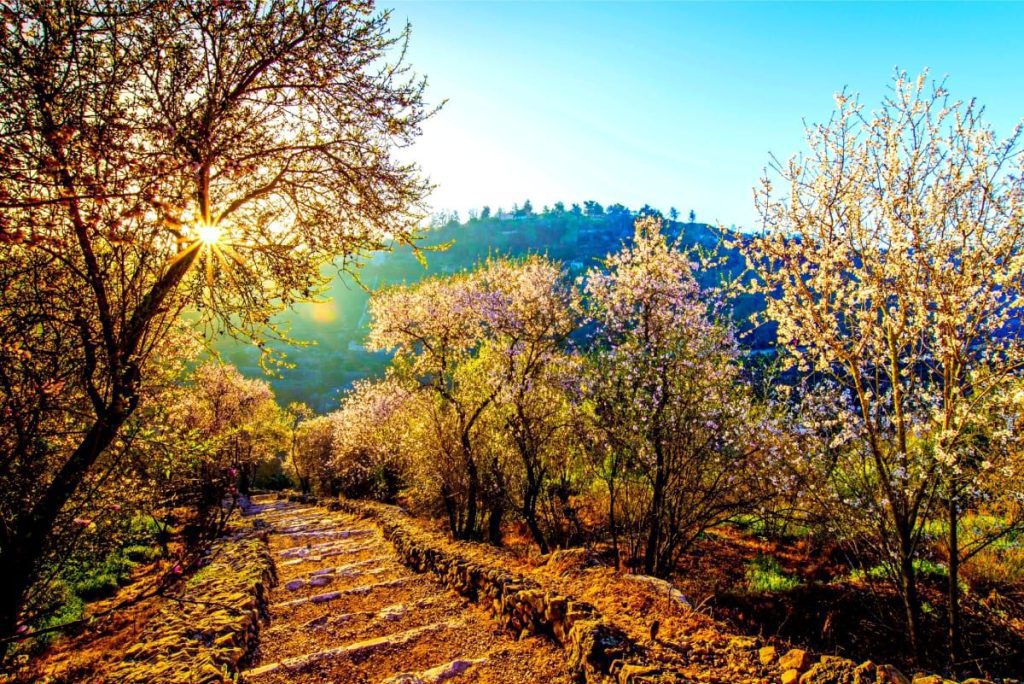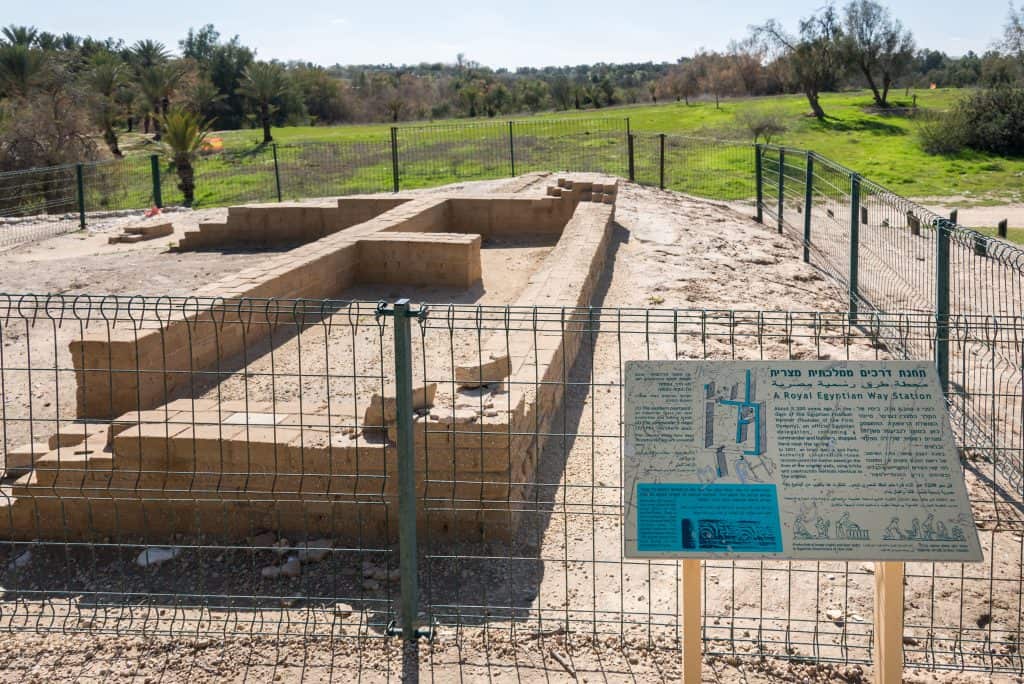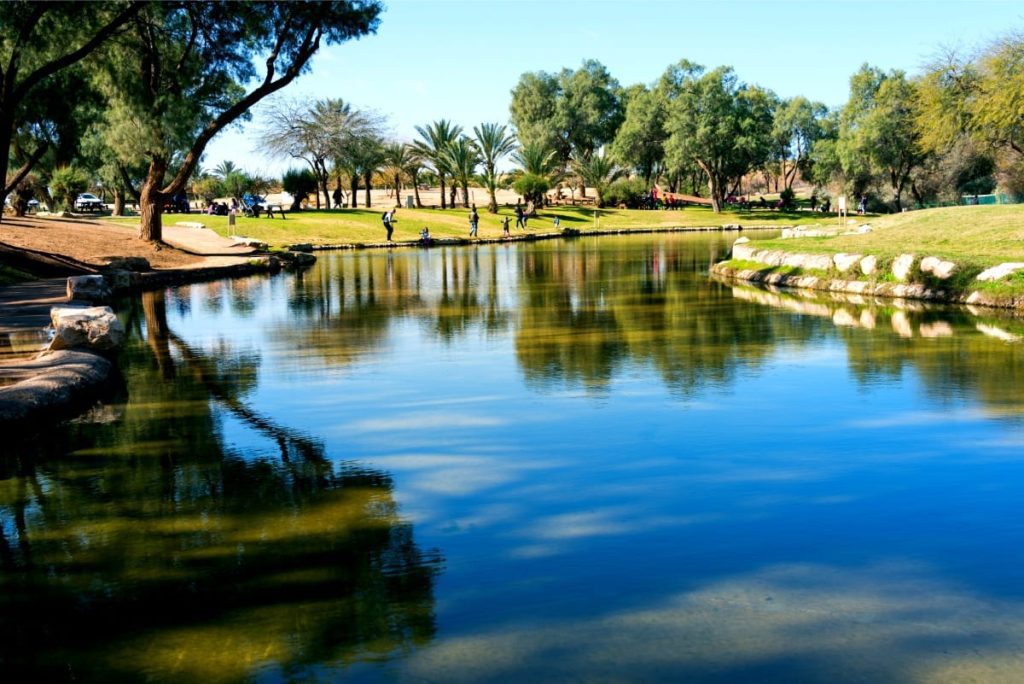Eshkol National Park (also known Habsor National Park) is located in the Negev Desert, on the banks of HaBesor Stream. In fact, the area of the garden is about 3,000 dunams. The park is named after Levy Eshkol, the prime minister of Israel in the 1960s. Thousands of trees and shrubs that are resistant to saline water were planted and grass lawns were planted. All areas of the park are irrigated in the waters of Ein HaBesor. The garden has spacious lawns, with picnic tables, BBQ areas, pools, and paddling streams and games for children. In other words, Eshkol National Park is a really nice park to check out if you are touring the Negev!

Things to Do in Eshkol National Park
So Ein (spring in Hebrew) HaBesor – a spring that originates in the garden’s northern part and is the park’s main attraction. Furthermore, the spring’s flow is about half a million cubic meters per year and its waters have high salinity (1,300 chlorides per liter). Initially, the spring was a small pool surrounded by the common reed plant. Today, the springs feed a large artificial pool (forbidden for bathing) whose water temperature is regularly at 20 degrees throughout the year.
Joe Alon Center Sataf Nature Reserve

More About Eshkol National Park
Tel Ein HaBesor – A small mound southwest of Ein HaBesor that was excavated by a delegation from Tel Aviv University in the years 1970–1983 under the management of Ram Gofna and Dan Gazit. Moreover, Four different archaeological layers of settlement were found at the site. Three strata from the Middle Bronze Age (3,300-2,900 BCE) and one stratum from the Hellenistic period (2nd century BCE). Remains of a state-owned Egyptian road station were discovered in one of the ancient strata. So, these findings prove the existence of a permanent Egyptian presence in southern Canaan at the beginning of Egypt’s first dynasty.

Khirbet Shalal: So, on one of the hills in the north of the garden, there are the remains of a Byzantine church. Australian soldiers discovered the church and the beautiful mosaic on its floor in World War I after occupying the machine gun position at the top of the hill on April 17, 1917. Furthermore, the mosaic was moved to Canberra, Australia, and embedded in the memory of the Unknown Soldier in the Australian War Memorial. Last, a note on the mosaic dates its work to the year 561 CE. The mosaic model is similar to the one discovered in the ancient synagogue in the residence hall (near Kibbutz Nirim, about 9 kilometers west of there). Excavations conducted in 1970, led by Ram Gofna and Dan Miron, revealed the church’s cistern.

Eshkol National Park Opening Hours
The entrance to the park closes one hour before the cited closing time.
Summer hours:
Sunday–Thursday and Saturday: 17:00 – 08:00
Friday and holiday eves: 16:00 – 08:00
Winter hours:
Sunday–Thursday and Saturday: 16:00 – 08:00
Friday and holiday eves: 15:00 – 08:00
Holiday eves: 13:00 – 08:00
Yom Kippur eve: 13:00 – 08:00
Phone: 08-9985110 Fax: 08-9985267







